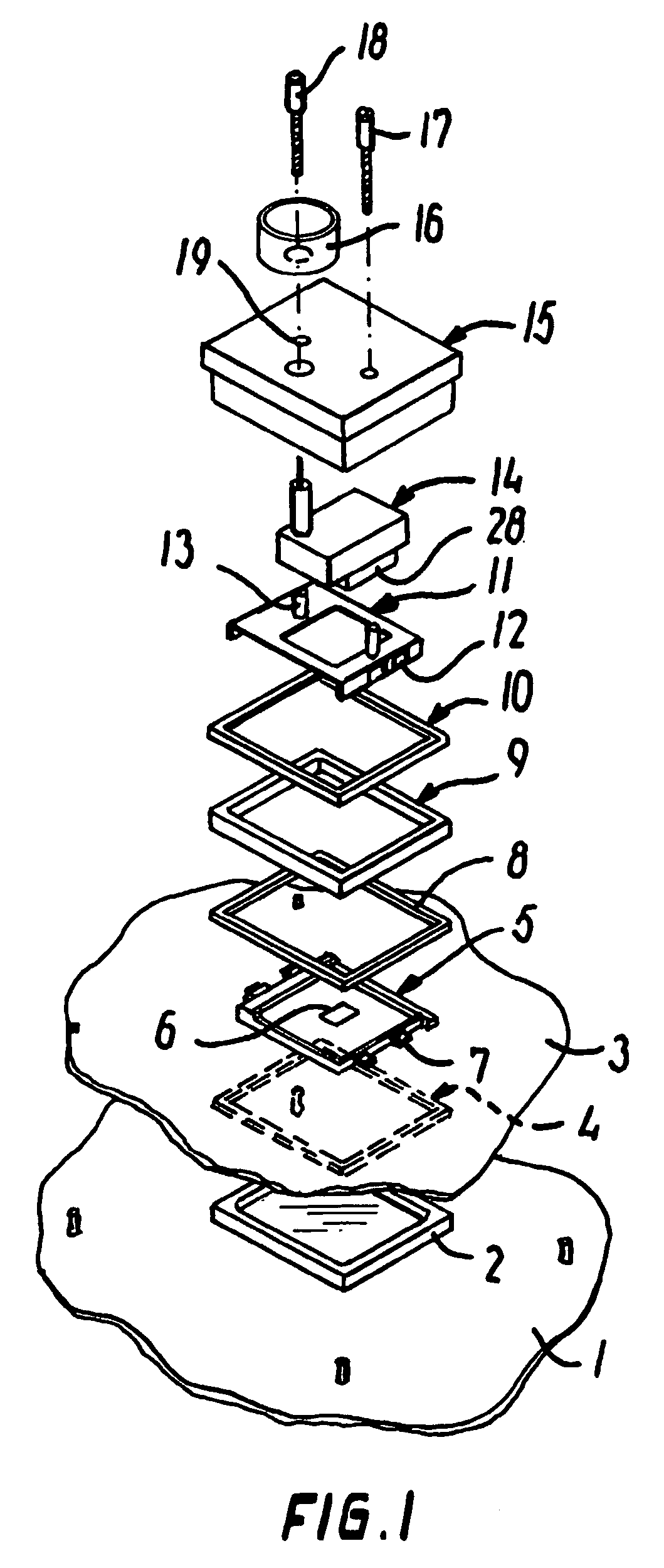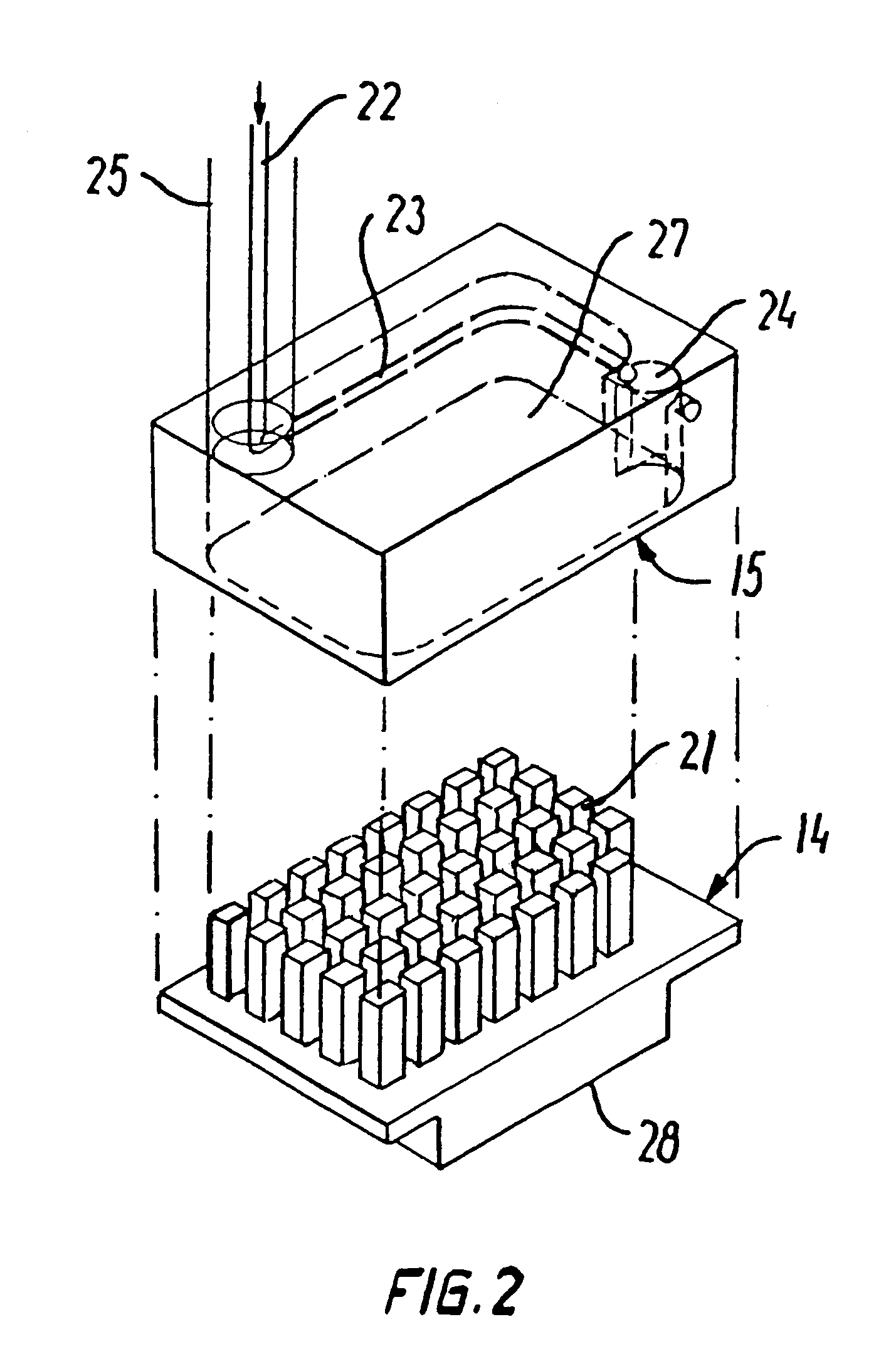Cooling arrangement for an integrated circuit
a cooling arrangement and integrated circuit technology, applied in the direction of electrical equipment, lighting and heating apparatus, electrical equipment contruction details, etc., can solve the problems of ineffective cooling, risk of short circuit of signal paths that are close to the socket or the socket in which the socket is mounted, and more power must be supplied, so as to prevent the formation of condensate and strong cooling of the integrated circuit or processor
- Summary
- Abstract
- Description
- Claims
- Application Information
AI Technical Summary
Benefits of technology
Problems solved by technology
Method used
Image
Examples
Embodiment Construction
[0028]In FIG. 1, the numeral 1 designates a cabinet portion which forms part of a rack or the like.
[0029]The cabinet has mounted therein a printed circuit board 3 on which inter alia a socket 5 is mounted, the socket centrally carrying an integrated circuit 6. Locking hooks 7, whose function will be described later, are arranged along two of the edges of the socket 5.
[0030]15 designates a housing on which a lid 14 may be applied, which, as will be explained later, constitutes an evaporator in a cooling arrangement according to the invention. As will also be seen, the housing 15 is formed with through holes, one of which is designated 19, through which screws 17, 18 may be received. Finally, a flange 16 is arranged on the upper side of the housing 15, adapted to receive pipes for the supply of coolant, as will be explained in connection with FIG. 2.
[0031]These screws 17, 18 may be screwed into holes, one of which is designated 13, in a locking part 11 having recesses 12 along two of ...
PUM
 Login to View More
Login to View More Abstract
Description
Claims
Application Information
 Login to View More
Login to View More - R&D Engineer
- R&D Manager
- IP Professional
- Industry Leading Data Capabilities
- Powerful AI technology
- Patent DNA Extraction
Browse by: Latest US Patents, China's latest patents, Technical Efficacy Thesaurus, Application Domain, Technology Topic, Popular Technical Reports.
© 2024 PatSnap. All rights reserved.Legal|Privacy policy|Modern Slavery Act Transparency Statement|Sitemap|About US| Contact US: help@patsnap.com










